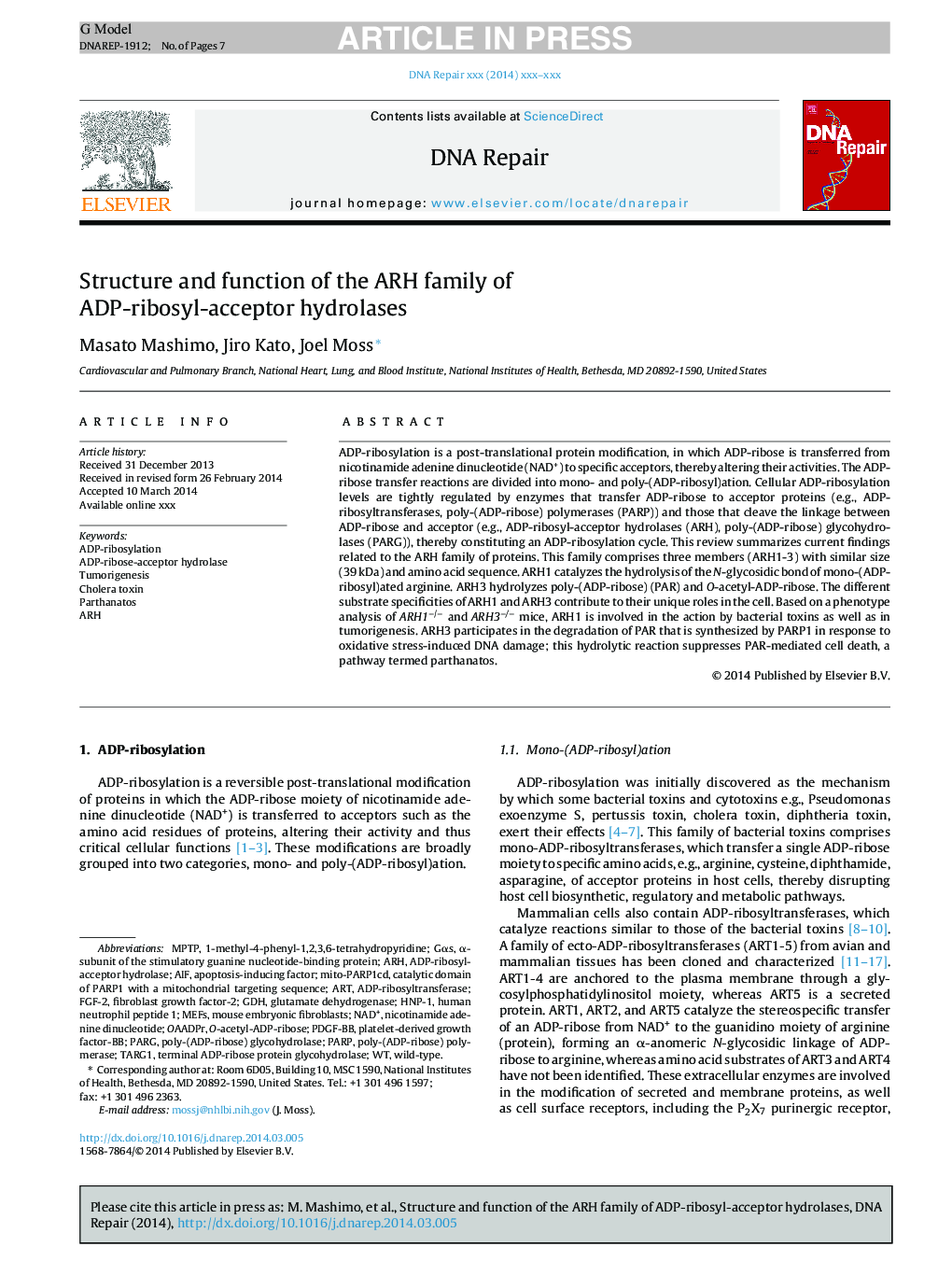| کد مقاله | کد نشریه | سال انتشار | مقاله انگلیسی | نسخه تمام متن |
|---|---|---|---|---|
| 8320750 | 1539405 | 2014 | 7 صفحه PDF | دانلود رایگان |
عنوان انگلیسی مقاله ISI
Structure and function of the ARH family of ADP-ribosyl-acceptor hydrolases
دانلود مقاله + سفارش ترجمه
دانلود مقاله ISI انگلیسی
رایگان برای ایرانیان
کلمات کلیدی
PARGPARPGαsARHFGF-2OAADPrMEFsMPTPADP-ribosylationGDHHNP-1O-acetyl-ADP-riboseADP-ribosyltransferasePDGF-BBParthanatos1-methyl-4-phenyl-1,2,3,6-tetrahydropyridine - 1-methyl-4-phenyl-1،2،3،6-tetrahydropyridineNAD+ - NAD +AIF - آیفونTumorigenesis - تومورزاییcholera toxin - سوزش گوارشیapoptosis-inducing factor - عامل القاء آپوپتوزplatelet-derived growth factor-BB - عامل رشد پلاکتی-BBfibroblast growth factor-2 - فیبروبلاست رشد فاکتور 2mouse embryonic fibroblasts - موش فیبروبلاست جنینیwild-type - نوع وحشیnicotinamide adenine dinucleotide - نیکوتین آمید adenine dinucleotideART - هنرpoly-(ADP-ribose) polymerase - پلیمراز (ADP-ribose) پلیمرازglutamate dehydrogenase - گلوتامات دهیدروژناز
موضوعات مرتبط
علوم زیستی و بیوفناوری
بیوشیمی، ژنتیک و زیست شناسی مولکولی
زیست شیمی
پیش نمایش صفحه اول مقاله

چکیده انگلیسی
ADP-ribosylation is a post-translational protein modification, in which ADP-ribose is transferred from nicotinamide adenine dinucleotide (NAD+) to specific acceptors, thereby altering their activities. The ADP-ribose transfer reactions are divided into mono- and poly-(ADP-ribosyl)ation. Cellular ADP-ribosylation levels are tightly regulated by enzymes that transfer ADP-ribose to acceptor proteins (e.g., ADP-ribosyltransferases, poly-(ADP-ribose) polymerases (PARP)) and those that cleave the linkage between ADP-ribose and acceptor (e.g., ADP-ribosyl-acceptor hydrolases (ARH), poly-(ADP-ribose) glycohydrolases (PARG)), thereby constituting an ADP-ribosylation cycle. This review summarizes current findings related to the ARH family of proteins. This family comprises three members (ARH1-3) with similar size (39Â kDa) and amino acid sequence. ARH1 catalyzes the hydrolysis of the N-glycosidic bond of mono-(ADP-ribosyl)ated arginine. ARH3 hydrolyzes poly-(ADP-ribose) (PAR) and O-acetyl-ADP-ribose. The different substrate specificities of ARH1 and ARH3 contribute to their unique roles in the cell. Based on a phenotype analysis of ARH1â/â and ARH3â/â mice, ARH1 is involved in the action by bacterial toxins as well as in tumorigenesis. ARH3 participates in the degradation of PAR that is synthesized by PARP1 in response to oxidative stress-induced DNA damage; this hydrolytic reaction suppresses PAR-mediated cell death, a pathway termed parthanatos.
ناشر
Database: Elsevier - ScienceDirect (ساینس دایرکت)
Journal: DNA Repair - Volume 23, November 2014, Pages 88-94
Journal: DNA Repair - Volume 23, November 2014, Pages 88-94
نویسندگان
Masato Mashimo, Jiro Kato, Joel Moss,